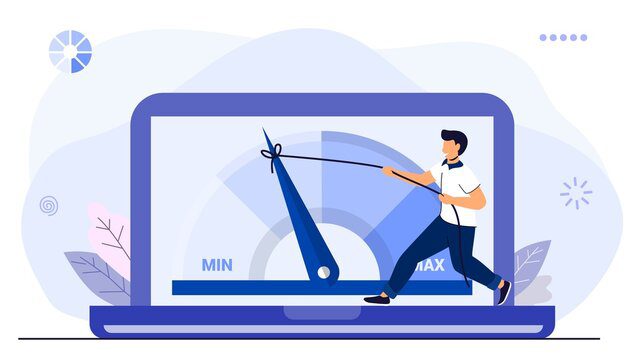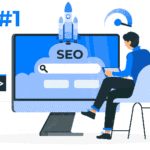Are you interested in improving your small business website? An important component of your business is your website. If you’re in e-commerce or face-to-face business, your website is the first place potential customers will visit to learn more and decide whether to do business with you.
No matter how long your site has been around, there’s always room for improvement. The following 11 tips will help you make your small business website more effective, impressive, and easier to find. Consider these ideas to improve your website and potentially attract more visitors.

Make your website easy to navigate
Whenever someone visits your website, you want them to have a seamless and uncomplicated experience. The more difficult it is to navigate, the higher the chance that a visitor will leave out of frustration before finding the information they were looking for.
Great website navigation:
- Uses descriptive labels
- Is simple to use on mobile and desktop devices
- Directs visitors to the most important pages
Understand your customers’ needs
Understanding the reason that customers visit your website is crucial to building useful navigation. For example, when viewing a restaurant’s website, most visitors are looking for menus, location details, and how to make reservations. Meanwhile, someone comparing contractors will want to know all about your typical projects, pricing, and timelines. Whatever your customers want, place it upfront on your homepage or create a separate page linked through a visually dominant call to action.
Examples of top-visited pages:
- Location and contact page
- Pricing page
- Portfolio and/or examples of work
- Customer reviews
- Meet the team page
Keep it simple
Much like good design, the best way to create a positive user experience is to keep everything as simple as possible. One rule of thumb is that it should take your visitor no more than three clicks to find out what they want to know. At most, limit yourself to four or five top-level pages with supporting pages under those as needed.
Colors and design should be consistent

Visitors feel more confident when your web pages have a consistent theme. In order to create a high-quality website, the company’s brand guidelines must be adhered to throughout the site. Unprofessional websites have mismatched fonts, text sizes, color schemes, and images. Visitors may feel confused if they finish reading one page and click on a link, only to find a completely different-looking page with different colors and fonts.
It is also imperative to maintain consistency when navigating your website. Users may get confused if the search bar appears on one page but on the next, it appears on the left (or it’s not there at all). Keeping your styling, layout, and navigation consistent will enhance your visitors’ experience and keep them on your site.
Among the elements of a website that need to be consistent are:
The colors
The fonts
Sizes of fonts
The navigation menu
Format and resolution of images
Make your website search engine friendly (SEO)
You can also use all of this content and social proof for search engine optimization (SEO), provided you use the right keywords. A website’s SEO is the process of continually improving its search engine rankings.
Optimizing your website for search engines:
(If done correctly) can improve your website’s Google ranking
It can be performed by a specialist or by an employee
For any business website, it is essential
By using high-volume and industry-relevant keywords and phrases, you can appear when people search for your product or service. You can use free keyword research tools such as Wordtracker or Keyword Tool to decide which ones to target.
What you should and shouldn’t do when it comes to SEO
There is always something new to learn about SEO. Strategies that worked in the past may no longer work for your website today. In general, you should create content that you would enjoy reading and find useful.
You Shouldn’t
Make sure your site isn’t stuffed with keywords. The major search engines might even penalize you if you continue to use that strategy.
Do not rely solely on plugins and programs. For writing to be effective, there must be a human element.
Do not create content on topics you are not knowledgeable about.
You Should
Make sure your web page is useful to visitors.
Answer the most important questions about the topic.
Think about what’s working for top-ranking competitors and create original content based on that.
Make sure your website serves a specific purpose
Consider who your customers are and why they might visit your site. When you understand why your site exists, you can dive deeper into its purpose.
Your customers are:
Do they usually meet you in person, then visit your website?
Is your business found online, then visited?
Interested in learning more about you?
Buying something from your website?
Try to put yourself in the shoes of your customers
Consider what your customers expect from your website by putting yourself in their shoes. Is it so they can shop online or so they can research your company and products? Study your competitors’ websites to help you plan your own.
Find out what your strengths and weaknesses are
The use of free tools like Google Analytics can provide valuable information about how your website is currently being found and used by visitors. In order to determine if your website meets the needs of your customers, examine metrics such as:
Your website’s traffic sources (where your visitors come from)
The top pages on your website (the most popular pages)
Bounce rate is a measure of how quickly a page is left by a visitor.
Visitor time on page (the amount of time visitors spend on each page)
Make sure all content is original
Often, small businesses make the mistake of plagiarizing content. Creating high-quality, unique content can take time, but copying content from another website is a shortcut you shouldn’t take.
If a visitor clicked on ten links and found the exact same content on each, Google wants each search result to be unique. In order to prevent a bad user experience, Google filters out identical or extremely similar content. In other words, if you copy a competitor’s page, your page may not appear in search results.
Add social proof to your website
It is crucial for a business to build trust and credibility. On the Internet, where misinformation and scams are common, this is all the more crucial. Your website visitors want to hear from your real customers before they make a decision about your business.
Reviews from customers
Client testimonials
Ratings on business rating sites
Mentioning your company on social media
The following are examples of social proof:
In order to convert a visitor to a lead, you need to make them feel comfortable giving you a call, sharing their contact information, or buying from you.
By using social proof, you can build credibility. The following are ways to highlight your company’s social proof on your website:
Showcase your happiest customers’ written or video testimonials
Using Facebook, Yelp, and Google Business reviews to display positive feedback
Links to your company’s active social media accounts
Have a good content strategy

To start you need product-focused pages explaining and presenting your products and service in a compelling way. But, A successful website also includes blog posts, case studies, video tutorials, infographics, and FAQs to help customers learn more. Note there may be a preference for one medium over another based on the topic.
An article or two is a great start, but it’s not enough. What you really want is a content strategy—a whole ecosystem of content. A hub-and-spoke content strategy is a simple solution to this problem.
Essentially, you create an authoritative piece of content and then link to other relevant pieces from the same page. As well as keeping your audience engaged, building your internal linking structure will improve your website’s SEO.
Update your content to keep it update and relevant
Fresh, current information makes a great website. Remember to update sections of your site that are related to sales, upcoming events, or recent news on a regular basis.
Maintaining your website and making sure it reflects your latest products and services is a simple way to improve it. Make sure the answers you provide readers are still relevant and useful by updating your content marketing regularly.
Headings should act as a table of contents for your page
In order to learn what’s in store before reading, users often skim the headings. It should be possible to get a good sense of the entire page from the headings on your page within a few seconds. Each section’s heading should include your topic’s keyword to reassure users that they clicked on the right link.
Headings:
In SEO, they play an influential role
Suitable for skimming
Present a clear picture to the reader
In order to determine whether a page should be recommended for a particular search term, search engines use the headings of a page like an outline. To make sure users find the answer they need quickly, Google can highlight text and send them directly to that part of the page. Search engines and humans both prefer content that is scannable and well-organized, so make sure the topic is clear and relevant and the details easy to locate.
Make sure your website loads fast

Users value speed, and Google considers speed one of its top SEO ranking factors. It has been found that a customer is 90% more likely to abandon your page when it takes more than one second to load, according to Google research.
Speed of the website is important because:
A ranking factor for SEO
Visitor retention
Over time, it can be improved
It is possible for certain types of code to slow down a website. Your website’s speed can be improved by removing this code. With Google’s Page Speed Tool, you can test your website and receive recommendations.
In order to know how fast your website loads for visitors on their phones, test your website on a variety of mobile devices and connections. The experience of a mobile user visiting your site from a low-end phone on a regular internet connection will give you a good indication of what they can expect from it.
In addition to compressing large media files, another simple way to improve site speed is to reduce their size. Try to keep image file sizes under 100 KB when uploading or resizing. Page speed can be improved by shrinking file sizes, and image quality does not necessarily have to be compromised.
Give your visitors a clear call to action
Once your brand and product have become familiar to a customer, it’s time to get them to take action. There should be a clear call to action (often a button or link) to let them know what to do next, whether it’s downloading a resource, completing a transaction, or contacting a live agent.
The following are best practices for adding a call to action:
Make the button stand out by using a different color
Create text that entices users to click
Don’t limit your call to action to your contact page. Put them on your most-visited pages as well.
Enhance your contact forms by streamlining them
If you use a contact form, make sure it’s quick and easy to fill out. When form fields are reduced, form submissions increase. This may seem counterintuitive when you want to gather all the information right from the get-go.
Make the process as quick and simple as possible by sticking to the following fields:
First and last name
Phone number
Email address
Any additional information the visitor would like to provide can be entered into the Information field
Make sure your call-to-actions stand out by using contrasting colors
Choose a color that contrasts with the rest of the page to make your buttons and forms stand out. By using contrasting colors, you’ll attract attention to the button and encourage users to click it. Users will be attracted to a white page with a brightly colored “Order Now” button.
If you are interested in getting more traffic to your small business website we have a guide on how to do that.
Patricia has worked in digital marketing for 12 years.
And is the author of two books on the subject






